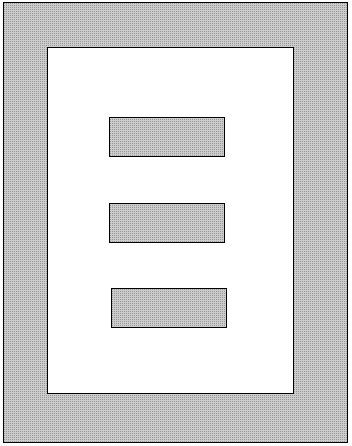
Concrete pads
Concrete pads or I-beam support
According to the design drawings, a sailboat was to be assembled on three jigs in an upright position. These jigs were supposed to be sitted on a foundation built from I-beams.

Because I had decided to build in my backyard, I figured that I-beams would require support too. Also, I planned to construct an overhead gantry that was going to have regular wheels and meant to roll over concrete pads instead of more traditional rails, not to mention 200 pounds welder that also needed a solid ground to move around. Therefore, I came up with the following concrete pad layout.

While considering local steel suppliers, metal cutting and priming shops, I began preparing my site for concrete pouring. I dug three holes for three pads in the middle and a driveway for a gantry around them. I put some treated lumber along the walls and reinforced future pads with 10 mm rebars spaced 20 to 30 cm apart.
It took me a few weeks to finish digging, leveling, squaring the lumber boxes and the driveway. Then we ordered six cubic meters of a ready-mix concrete and poured the foundation. I wished we had had more people than just me and Tania to level out and smooth concrete. It hardened quicker than we worked. The driveway, therefore, ended up being rougher than we wanted.
As it had turned out later, it still was ok for the gantry and even a welder to move around.

